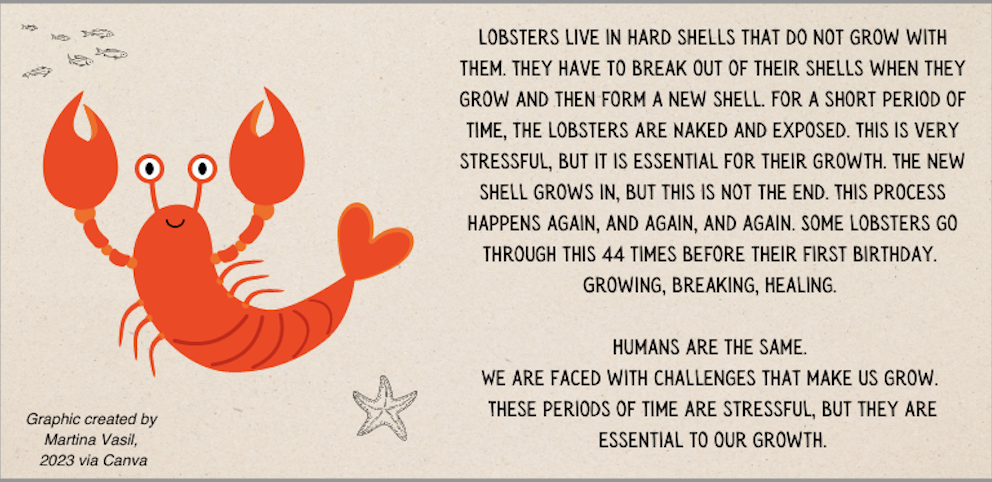11 Being a Critically Reflective Teacher
Martina Vasil
Congratulations! You have completed your first teaching. I am sure it was difficult to watch and hear yourself on video, but I promise this gets easier with time.
An important part of teaching is constantly reflecting on what went well, what could go better, and how your students are progressing. Remember that you are new to this, so please be gentle and kind to yourself. There is a lot to learn, so the best thing to do is focus on the 1–2 things you did really well (yay!) and 1–2 things you want to focus on improving upon for your second teaching. Take my feedback, peer feedback, and cooperating teacher feedback as us helping you rather than seeing it as harsh criticism. You cannot grow without some discomfort. 
This can also be called The Learning Pit. You learn more when you get out of your comfort zone. It’s natural to feel a bit unsuccessful and uncomfortable when trying something new. James Nottingham created the Learning Pit® to support a culture of challenge, curiosity, reflection and resilience. See more at the website, learningpit.org
The critical part of this reflection is also considering ethical implications and consequences of your teaching practice. This requires self-reflection, understanding your intersectionality and identity (see Chapter 1), and how both exist in your teaching practice.
Being an Effective Teacher
Being an effective teacher involves considerably more than accumulating skills and strategies. Without tying teaching and management decisions to personal beliefs about teaching, learning, and development, a teacher will have only the bricks. The real ‘stuff’ of teaching is the mortar—what holds the bricks in place and provides a foundation. (Larrivee, 2000, p. 293)
Examining your own personal beliefs about teaching, learning, and development can help you understand why you are reacting to your first teaching the way you are. For example, I often have had college students feel like they were being disrespected by children because the classroom got a little loud at one point. Let’s pick that apart. Were students being disrespectful, or were the students actually talking about the lesson and were excited? Why would the teacher see this as disrespect? Did the teacher have music classes where conversation was not allowed? Turning the mirror back on oneself can help you think through why you have reacted to your first teaching and help you really examine what happened in the video of you teaching.
References
Larrivee, B. (2000). Transforming teaching practice: Becoming the critically reflective teacher. Reflective Practice, 1(3), 293–307. https://doi.org/10.1080/713693162
